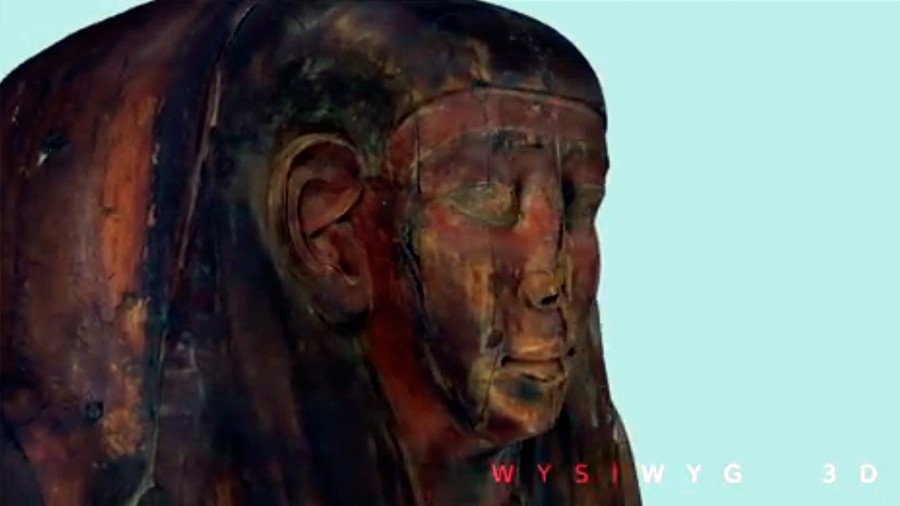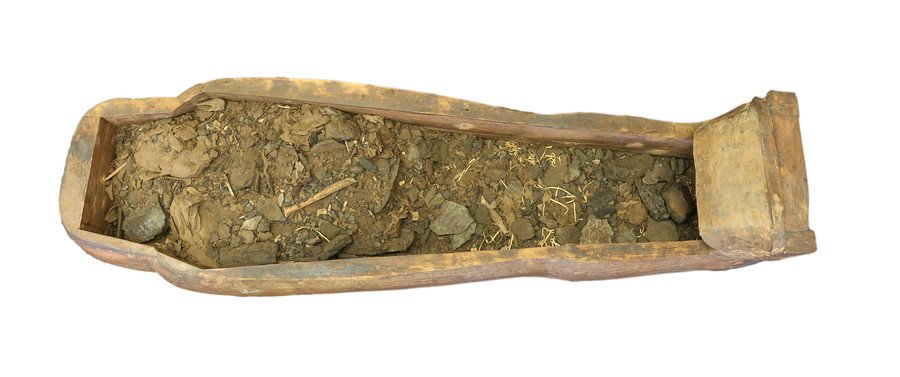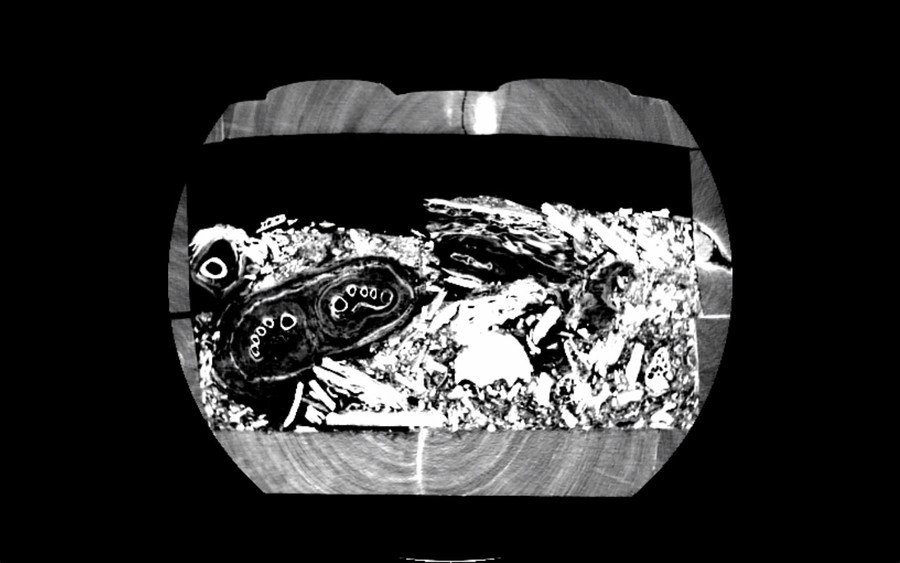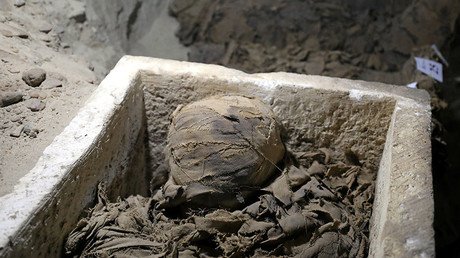The mummy returns: Ancient remains found in ‘empty’ coffin stored for 150 years (PHOTOS)

A 2,500-year-old mummy has finally been discovered in an Egyptian coffin stored at the University of Sydney for the last 150 years. It was previously believed the sarcophagus was empty.
Archaeologists at the Nicholson Museum – Australia’s oldest university museum – made the startling discovery when they lifted the lid on the ancient coffin and uncovered human remains. The mummy was not fully intact and the remains were disturbed, reports ABC News.
While the hieroglyphics on the coffin indicate it was made for a priestess called Mer-Neith-it-es, archaeologists point out that sometimes mummies are discarded from their original coffin for later use. Egyptian antiquity sellers would sometimes put another mummy inside if a customer requested it.

Archaeologists are now trying to unravel the mystery of who is really in the coffin by using 3D models and conducting CT scans. "It's older, and it's got some early degenerative changes and the sacrum is fused, so we know it's definitely an adult," radiologist Professor John Magnussen said. The scan reveal that the remains are of an adult aged over 30 and show that the feet and ankle bones were largely intact.

Another interesting discovery made by Egyptologist Connie Lord was the similarity between the cast and the one found in the coffin of Egypt’s most famous mummy – Tutankhamun. Lord noted the resin poured into the mummy’s skull after the brain was removed. "It's just an incredible find, I don't remember anyone finding something like this. It would have to be incredibly rare."
The quest to identify the remains could take months or even years. The Mer-Neith-it-es coffin will be exhibited in a new museum on the university grounds set to open in 2020, alongside three others owned by the university museum.
READ MORE: ‘Only the beginning’: 2,000yo mummies discovered at major Egyptian tombs (VIDEO)















